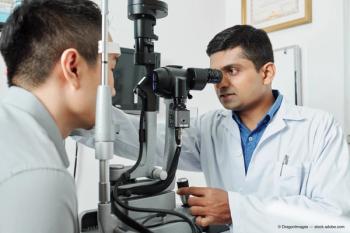
Teaching skills for successful technicians
The idea of creating an in-house training program for technicians and scribes can seem like a daunting task. However, having a clear, structured, and organized program as part of a clinic’s onboarding process will produce many benefits down the road.
In this field, there is a constant need to train entry-level technicians. Training them correctly from the start will save everyone the aggravation of the need to retrain them later, the concern of having them train someone else incorrectly, and the poor impression untrained staff will make on patients.
Training program
Ophthalmic Consultants of Boston is a large multi-specialty group with 10 locations and over 200 technicians. We have training programs in place for all levels of technicians and scribes.
We find that new hires who do not possess ophthalmic experience obtain an advantage from spending a week in the clinic observing different positions and the overall workflow of the clinic.
We require new technicians spend time in clinic observing patients who are being worked up by an experienced technician. They will also spend time in the exam room watching the role of the scribe and how the scribe interacts with the physician and the patient.
The new hires will spend time in the diagnostic department observing testing and learning what tests are requested for the different subspecialties.
Time spent observing different roles and in different clinic areas gives new hires a sound base to start their training.
Training specifics
Ophthalmic Consultants of Boston offers a weeklong training program for entry-level staff. We aim to run this program quarterly and hire toward that date. If an employee does not start on that time schedule, we have alternative training programs in place. It is these alternative programs I will be discussing in this article.
When technicians don’t start with a group, it is good to have a plan in place and a place to start. We start by reviewing simple housekeeping rules and giving the new employee a tour of the office. With all the technology we like to spend time orienting the new person to all the different systems we use in our office.
We assign each entry-level technician a mentor, a senior level member of our staff to whom the new tech can approach throughout training with questions. Each new employee is given a login to BSM Connections via BSM Consulting, which we use as a resource for training materials.
Clinic observation
Once we have the employee in the exam room, we ask her to observe specific things, such as how the technician relates to the patient, the questions patients ask, and the overall flow of the clinic.
After observing for a day, the new technician is given specific tasks to work on. While the senior level technician is checking a patient’s vision, the trainee will be writing down how he thinks the vision should be recorded. One the exam is finished, both technicians will review together and discuss the results.
Patient interaction tasks
Checking vision is easily learned, and it will give the new employee a sense of accomplishment when she is probably feeling overwhelmed. Once the employee has mastered checking vision, we move to additional reas such as taking history or documenting the patient’s chief complaint.
Training materials
Each task is supplemented with a lesson on the BSM Connections website or a chapter in the American Academy of Ophthalmology Home Study book.
See the sidebar box (“Entry-level technician training program”) for a sample of how the first few days looks like for a new technician in our practice.
Each new employee is given this outline so they know what to expect. You will find that what works well for one employee won’t work at all with the next. Everyone has their own style of learning but having a basic plan and the ability to adjust it to the circumstances will keep you and the new employee focused.
Technician skill levels
At Ophthalmic Consultants of Boston, we have three levels of scribes and four levels of technicians with a skill test, a knowledge test, and pay scale for each level. In order for staff to advance to the next pay grade, they are required to pass the written test and demonstrate that they have the required skills for each level.
Our tests are very detailed and contain over 300 questions. Staff members are given the entire test to study from and are then randomly tested on 50 questions.
We have structured these tests to mimic the Joint Commission on Allied Health Personnel in Ophthalmology (JCAHPO) certification testing, so our intermediate knowledge test is a good indication of what will be covered on the certified ophthlamic assistant (COA) exam and makes an excellent study guide. In addition our senior level knowledge test contains areas that are covered on the JCAHPO certified ophthalmic technician (COT) exam.
Benefits of training program
By taking steps to create a comprehensive training program now, your practice will reap benefits down the road for years to come. Staff will benefit from being trained properly, your patients will receive a higher level of care from these expertly trained technicians, and doctors will benefit by being presented with complete, accurate, and problem-focused exams.
Newsletter
Want more insights like this? Subscribe to Optometry Times and get clinical pearls and practice tips delivered straight to your inbox.















































